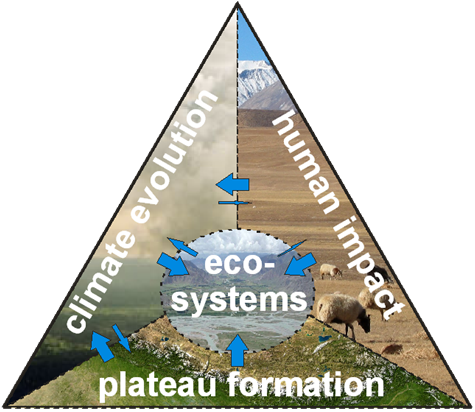Poster, 7th Sino-German Workshop on Tibetan Plateau Research, Hamburg: 2011-03-03 - 2011-03-06
Abstract:
The overall objective of this study, within the DFG Priority Program 1372: “Tibetan Plateau: Formation – Climate - Ecosystems (TiP)”, is to understand the driving forces controlling the hydrological system dynamic of the Tibetan Plateau in the context of a likely changing climate and monsoon dynamic. The glacier-fed lake Nam Co (30°N/90°E, 4718 m a.s.l., 2000 km²) showed a noticeable increase which indicates that the Nam Co basin (10.800 km²), located at the northern foot of the Nyainqentanglha Mountains in the southern central part of the Tibetan Plateau, is experiencing remarkable changes in the hydrological dynamics. Those changes need to be quantified by simulating or modelling the underlying hydrological processes and components, whereas one of the major challenges in the widely ungauged region is the lack of suitable and reliable climate data to drive hydrological models. Due to the severely limited data availability hydrological modelling applications of the Nam Co basin rely mostly on coarse global and regional gridded climate data sets. Since the single data sets were derived using different input sources such as ground observation, satellite estimates and climate model simulations, differences in quality and quantity can be expected. The differences need to be examined in order to identify the quantitative uncertainty and to evaluate the suitability of gridded climate data as driving forces for distributed hydrological modelling of the Nam Co basin. To assess the spatial and temporal deviations between various data sets, a comprehensive data evaluation of temperature and precipitation time series was carried out. The comparison of individual data sets showed some reasonable agreement, but also substantial differences as well as large deviations in the magnitude, the spatial pattern and the seasonality. Due to the coarse resolution of the gridded data and the sparse availability of ground data, which are mainly located in lower elevations, the comparison between gridded and station data was strongly limited. Since it is hard to determine the reliability and plausibility of several data products for modelling applications, sensitivity and uncertainty analyses of climate input data along with ensemble modeling strategies are required to quantify the impact of data uncertainty on the model response. This study, however, emphasizes the importance of future research efforts in terms of the development of regional data sets with finer resolution to overcome the poor data situation over the Tibetan Plateau. Such high resolution is needed for a sufficient representation of regional orographic patterns and effects as well as to reduce the model’s uncertainty attributed to climate input data.

